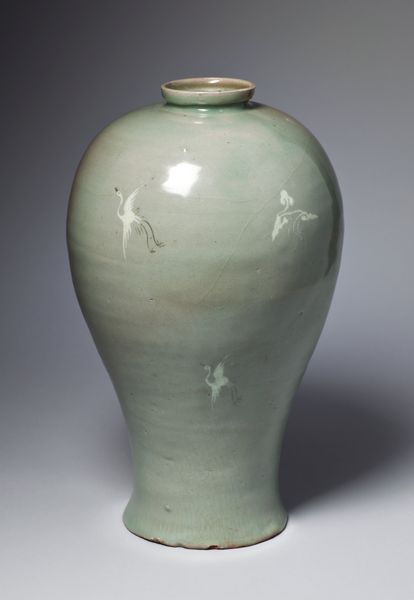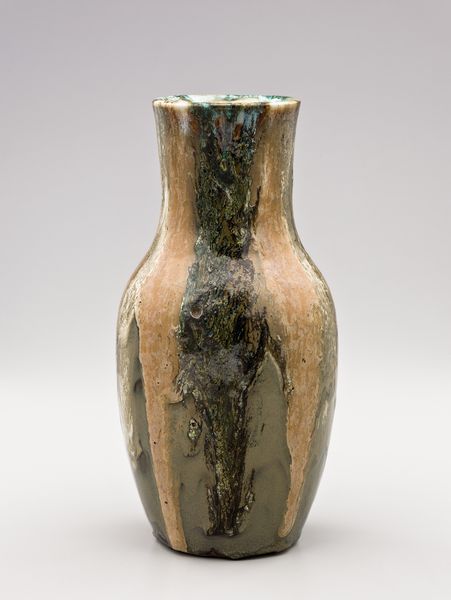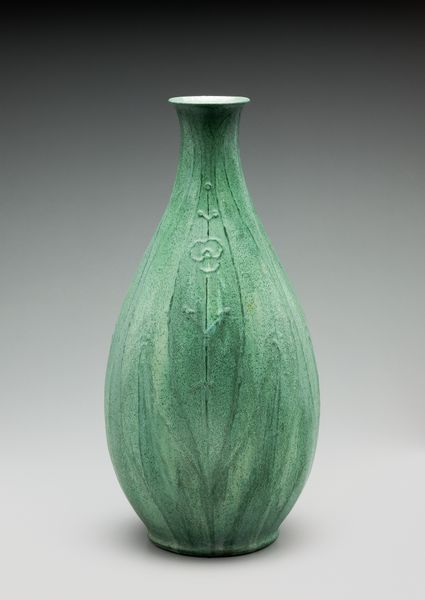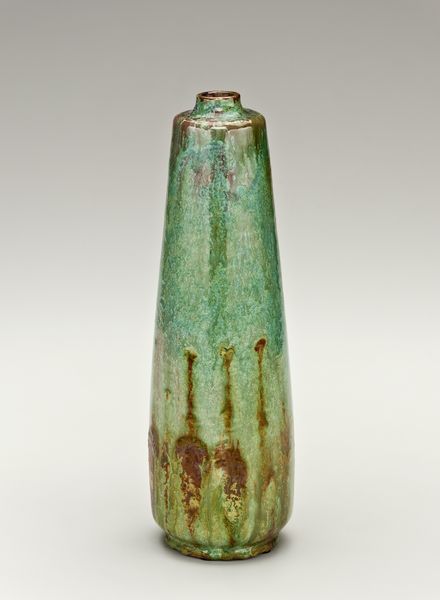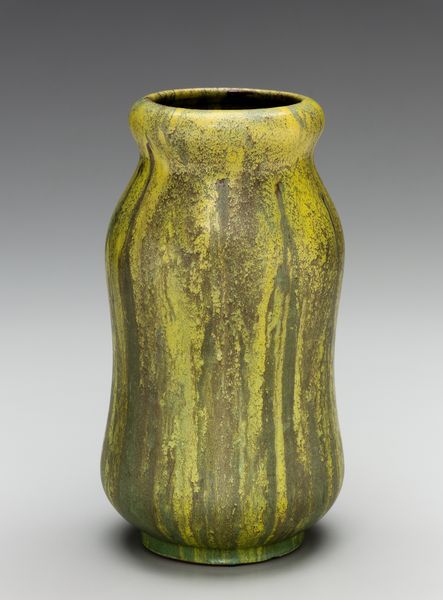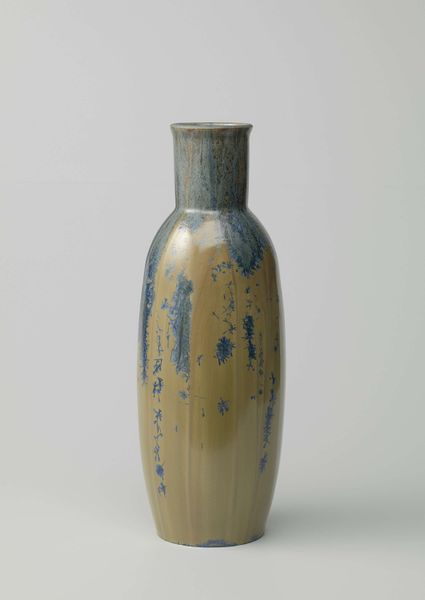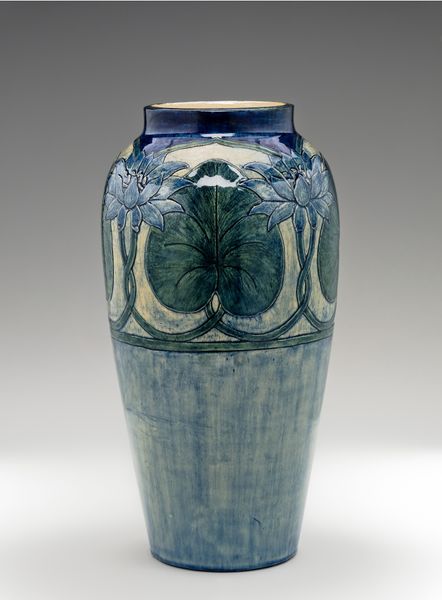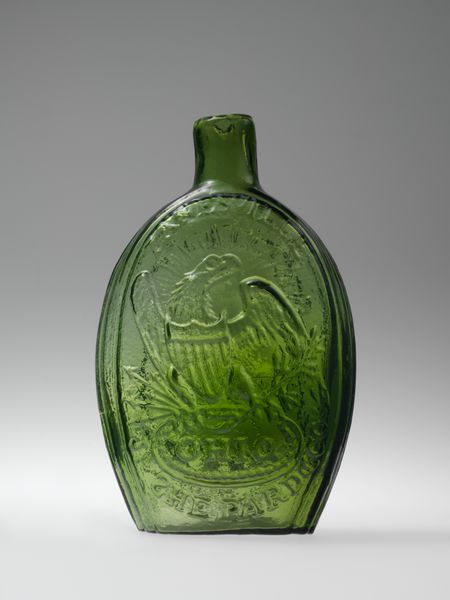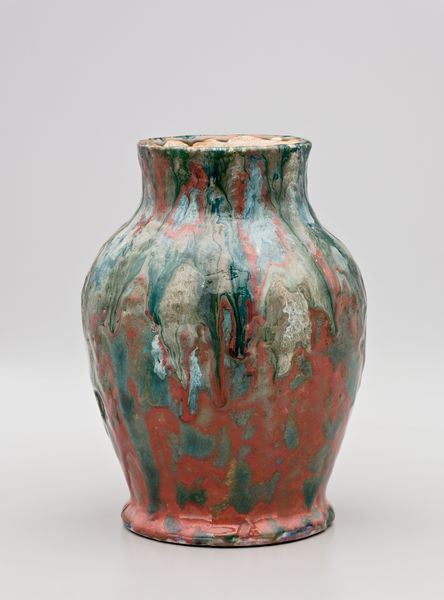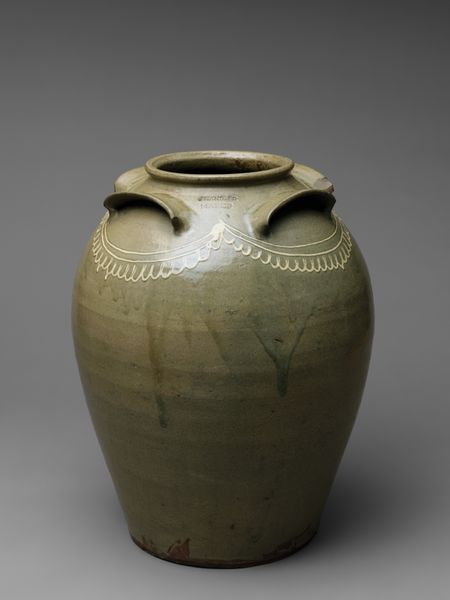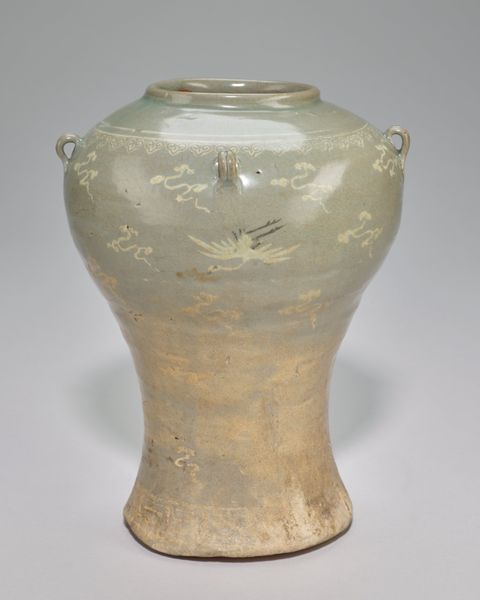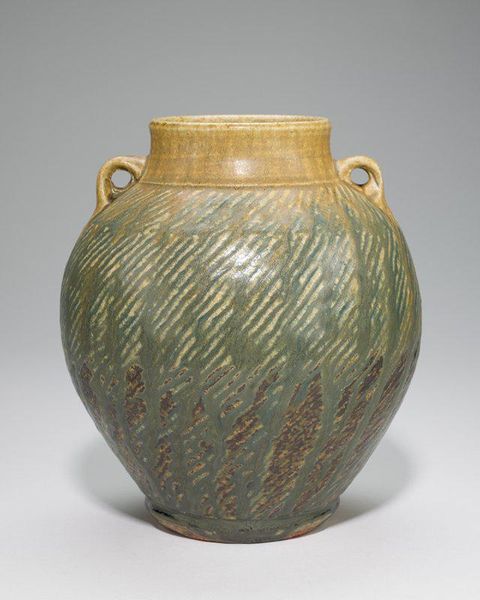
ceramic, earthenware, sculpture
#
art-nouveau
#
ceramic
#
form
#
earthenware
#
stoneware
#
geometric
#
sculpture
#
ceramic
#
decorative-art
Dimensions: 13 3/8 in. (34 cm)
Copyright: Public Domain
Curator: The 'Vase,' made sometime between 1895 and 1921 by William J. Walley. It resides here at the Metropolitan Museum of Art. Editor: Immediately, the texture grabs my attention. That heavily worked surface, those earthy browns bleeding into rivulets of deep green—it evokes a primeval landscape, something raw and untamed. Curator: It’s interesting you say "raw". The vase, crafted from earthenware and stoneware, embodies the Art Nouveau embrace of natural forms. However, Walley’s workshops operated within a complex network of patronage and exhibition culture. So, was this supposed “raw” nature? Or a carefully mediated presentation? Editor: Regardless of intention, the formal qualities speak of fluidity. The way the handles arc, the cylindrical body rising upwards—it suggests organic growth, echoing plant forms. Notice how the glazes aren’t uniform, but instead pooled and dripped, further emphasizing movement. It is quite sculptural, as if ceramic mimics other materials such as Bronze. Curator: Certainly, there's an illusion, if we can consider its function as separate. Vessels in this era blurred lines, appearing at important exhibitions to showcase aesthetic capabilities. The emphasis was less on pure utility. Instead it lay more in elevating everyday objects to the realm of art, catering to bourgeois tastes while paradoxically referencing idealized rustic simplicity. Editor: Yes, function follows form... and also maybe confuses it. And isn’t there an internal contradiction at play, presenting an object of high craft that appears as "effortless" and organic as we've noted? Is Walley commenting on the industrial replication and perfection by purposefully leaning into perceived imperfections and "earthy rawness"? Curator: It highlights a tension. Decorative arts, like this vase, were not just aesthetically pleasing, but tools for constructing identity and conveying social status. Appreciating the “natural” in art aligned the buyer with contemporary intellectual currents, revealing not so subtle cultural aspirations. Editor: Perhaps the piece isn't striving for nature in a pure form, but attempting to aestheticize it. This really highlights how intention in craftsmanship gets diffused within society’s own set of self reinforcing signals and systems. Curator: Indeed, a single vase embodies a myriad of socio-cultural signals, making this “simple” decorative object more profound. Editor: I won't view surface appearances without questioning them again any time soon!
Comments
No comments
Be the first to comment and join the conversation on the ultimate creative platform.
